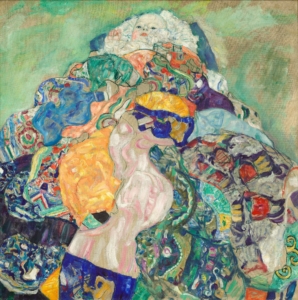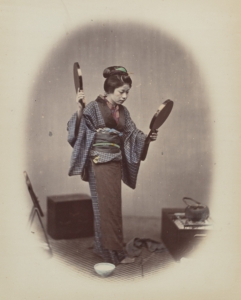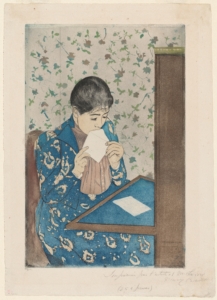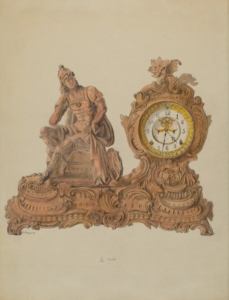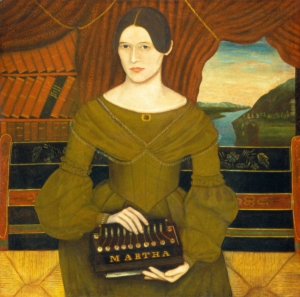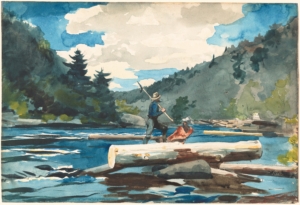“Getting What You Want!” What an Infant Has Taught Me About Pitching Art
In my early adult years, as I contemplated starting a family, a dear friend asked why I wanted children. In my naiveté and with a limited perspective that the world is overly rational, I said, “I want to develop a mind.” Thankfully, I have developed a wee bit in my perspective on the quantum operations of the world, and with firsthand experience I can say the joy of being a parent resides in the front-row seat to watching a human form. My parental joy is more about my observation of the formation than influencing it.
A gift of my VIP purview into the development of a human has been observing the process of getting what you want. It is INCREDIBLE what evolution—the propagation of our genetic material—has given us: namely, an ability to keep one of the most demanding species alive. It takes a lot to sustain life, even if that ball of flesh is just 9 lbs. AND DAMN the blob is good at getting what they want.
I am analytical, so let’s break down how a baby is capable of getting a grown human to do frankly insane things (months of sleep deprivation is just batty).
What is the baby’s pitch? And what can the baby’s pitch teach us about getting what we want?
The Vision: Where are you going?
I can’t step into the inner workings of an infant, but I am confident their overarching desire is to just be—to just continue living. As a parent, I share that vision with the child I am caring for. There is incredible alignment between our desires. This may not sound like a lot to go on, but let’s consider and see if it is helpful.
The vision is very simple and very clear. The baby wants to live. As a human who has the exact same self-desire, I understand it and can wrap my mind around what it will mean to work toward that goal and what it is like to achieve that goal. When we are asking someone else to join our journey, it is critical that the other party understands where we are going. A clear vision is a great first step toward getting someone else to join our adventure.
The vision of the baby aligns with the interest as a parent. I, too, want my child to live and will work toward that end. In business, alignment with vision is valuable for similar reasons: It will attract energy, effort and resources to accomplish the goal.
About You: Why are you the one to do it?
A baby—more particularly, my baby—is the perfect person to go on living in the world. They will carry me far beyond my own ability. They have the exact material I desire to get the job done and, if I parent as I hope, the personality and skills to carry a legacy far beyond.
Evolution is a very powerful tool. Keeping your genes in the game has shaped wild physiology and psychology. As humans, we too want to see our progeny live beyond us. Our child is exactly the right person to see our destiny extend into the future—or at least our genetic material.
When asking someone to give you a resource, buy a painting or hire you for service, they want to confidently know that you are capable of delivering what you say you can (your vision). Their assessment might be answered by the object that stands in front of them, but frequently they need more. They need to know your story (genetic makeup and all), they need to know what you have done before, and they may need to know who else has validated your abilities. A successful pitch—knowing or unknowing—addresses who you are.
The Request: What do you need to accomplish your vision?
It is frequently said that keeping an infant alive is a matter of three things: sleep, food and diaper changes. I can certainly tell you that is easier said than done, but my ink would be wasted compared to the immense cultural artifacts that already speak to the topic.
As a human myself, I am very clear on what my child needs in the earliest stages to maintain their presence on the planet. The challenge typically resides in my inability to interpret their request for such things. About all they have in their arsenal for attention is crying. It is a beautiful thing when we get to facial expressions, and loads of fun when sounds come together for words.
A pitch needs to include an ask. What is it that you need in order to accomplish your vision? Money is not a great answer to this question. No one wants to part with their money for the sake of giving someone money. What will the money give you? Time, resources, connections, space—these are better requests than money.
It may seem obvious when making a pitch, but it is all too easy to overlook making the request. We may not know what we need, or we may not even “cry” for someone else to interpret. It is worth exploring: What do I need, and how do I ask for it?
The Reward: What do I get for helping you with your vision?
I have been asked if I would do it again—have another child enter my home. If I could go back in time, I ABSOLUTELY would say yes. As for adding chaos on top of chaos, the jury is still out. There are incredible rewards for joining a baby on the journey to live. If you’re curious what I have found, feel free to ask, but needless to say, parenting is DEEPLY rewarding.
We seem to again have the benefit of evolution on our side. Our kids’ genes keep us in the game. We are also capable of seeing the joy of rearing a child, or we may see the benefit of having future support as we age, or we may engage the status of being a parent. There are ample rewards given to a parent for participating in the act of giving a child a life. (And if there are not—or our perspective is off—that is what therapists exist for 🙂)
When we ask someone else to join our journey, there is an expected return for the investment, even if it goes unsaid. And I will add: If it is not said, it is probably not a healthy relationship. There is a good chance for resentment and toxicity to find their way into the connection where expectations have not been expressed.
When we ask someone to join us, the best rewards are more than money—you can get creative with what you offer. My baby’s smile, their feet pitter-pattering across the floor as they run to greet me, and bestowing the title of “Dada” upon me will reside with me far beyond any item a dollar could buy.
Your vision, about you, the request and the reward will require varying degrees of communication. Your relationship with the other party determines how much is said and how much is intuited. But all aspects of the pitch are still present—just as they are in the relationship between a parent and a child.
My toddler is not pitching his next business venture to me. But he has certainly offered me a lot of perspective on how someone who is incapable of speaking can get what they want—including my heart.
If you are interested in creating your own pitch and translating these four aspects of a child getting what they want into your own creative practice, feel free to reach out. We host free virtual professional development sessions, we have an archive of professional development resources, and we are always looking for a great conversation over coffee.
Banner Art Credits: Baby (Cradle), 1917–1918, by Gustav Klimt, shows a child nestled in a swirl of color and pattern—barely visible, yet fully central. Set against a bright yellow background here, the piece becomes more than a portrait of infancy. It becomes a metaphor for early vision: pure, urgent, and still forming. The visual noise and softness of Baby (Cradle) mirror the early chaos of communication—a fitting echo for a session about clarifying your vision and making the ask.